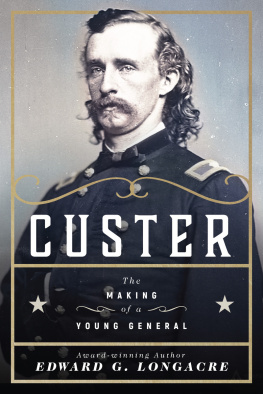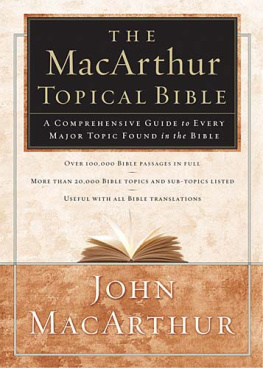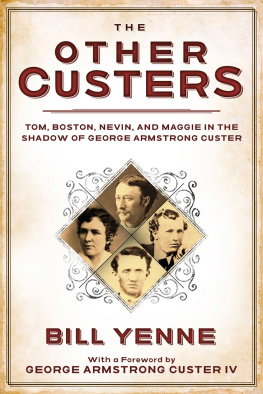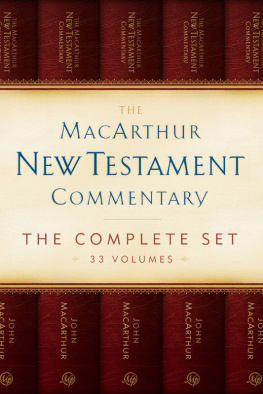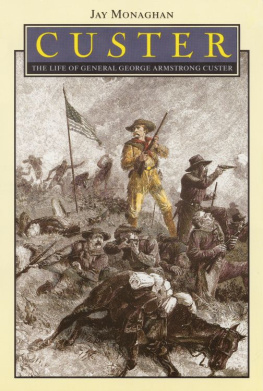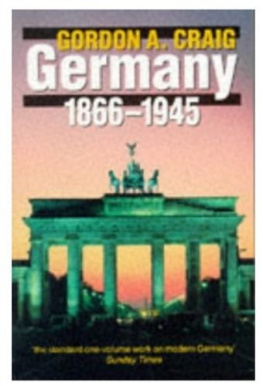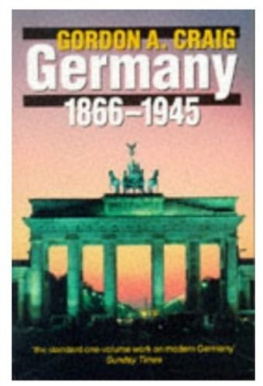Edward C. Dailey - From Custer to MacArthur: The 7th U.S. Cavalry (1866-1945)
Here you can read online Edward C. Dailey - From Custer to MacArthur: The 7th U.S. Cavalry (1866-1945) full text of the book (entire story) in english for free. Download pdf and epub, get meaning, cover and reviews about this ebook. year: 1995, publisher: Turner Publishing Company, genre: Romance novel. Description of the work, (preface) as well as reviews are available. Best literature library LitArk.com created for fans of good reading and offers a wide selection of genres:
Romance novel
Science fiction
Adventure
Detective
Science
History
Home and family
Prose
Art
Politics
Computer
Non-fiction
Religion
Business
Children
Humor
Choose a favorite category and find really read worthwhile books. Enjoy immersion in the world of imagination, feel the emotions of the characters or learn something new for yourself, make an fascinating discovery.

- Book:From Custer to MacArthur: The 7th U.S. Cavalry (1866-1945)
- Author:
- Publisher:Turner Publishing Company
- Genre:
- Year:1995
- Rating:3 / 5
- Favourites:Add to favourites
- Your mark:
- 60
- 1
- 2
- 3
- 4
- 5
From Custer to MacArthur: The 7th U.S. Cavalry (1866-1945): summary, description and annotation
We offer to read an annotation, description, summary or preface (depends on what the author of the book "From Custer to MacArthur: The 7th U.S. Cavalry (1866-1945)" wrote himself). If you haven't found the necessary information about the book — write in the comments, we will try to find it.
From Custer to MacArthur: The 7th U.S. Cavalry (1866-1945) — read online for free the complete book (whole text) full work
Below is the text of the book, divided by pages. System saving the place of the last page read, allows you to conveniently read the book "From Custer to MacArthur: The 7th U.S. Cavalry (1866-1945)" online for free, without having to search again every time where you left off. Put a bookmark, and you can go to the page where you finished reading at any time.
Font size:
Interval:
Bookmark:
FROM CUSTER To MACARTHUR
TURNER PUBLISHING COMPANY

TURNER PUBLISHING COMPANY
Publishers of Military History
Publishers Editor: Robert J. Martin
Writer: Edward L. Daily
Designer: Luke A. Henry
Copyright 1995
Turner Publishing Company
This book or any part thereof
may not be reproduced without
written consent of the publisher
Library of Congress Catalog Card No.95-60659
ISBN: 978-1-56311-233-1
Books available from the publisher.
TABLE OF CONTENTS
THE GARRYOWEN
A cavalry horseshoe, or, heels upward, with crease, sabre and seven nail heads, white. Above and joining the heels of the shoe, a scroll, azure, bearing the words, GARRYOWEN, or
At the base and emerging from sinister side of the shoe, a dexter arm embowed, vested azure, the hand in the buckskin gauntlet, proper, grasping an old style U.S. Army sabre, or hilted, or blade extended to center or scroll gripe, sabre threaded or
Explanation of Design
The horseshoe is symbolic of the Cavalry. Its color, gold (yellow in heraldic tincture), is the color of the old uniform facings of the United States Cavalry, in existence when the Regiment was organized and still is retained as the color of the Cavalry Arm.
The words, GARRYOWEN, are the title of an old Irish (sic) war song known and used as the Regimental song since the days of General Custer. Its rollicking air symbolizes the esprit de corps for which the Regiment is noted.
The arm, taken from the crest of the Regimental Coat of Arms, symbolizes the spirit of the Cavalry Charge. At the time of the organization of the Regiment, this position of the arm and sabre was known as Raise Sabre and was taken at the command, Charge. The sabre itself is of the old Cavalry type used in the Indian campaigns. The gauntlet also is symbolic of those times. The blue of the sleeve is the blue of the old Army uniform. The twisted emblem at toe of the shoe is symbolic of Indian days.
For many years, the Regimental song was accepted as being of Scottish origin, however, it has been definitely established that the song is of Irish origin. It had been used by several Irish regiments as their quick march; the Fifth Royal Irish Lancers stationed in the suburb of Limerick called GARRYOWEN, (the Gaelic word, meaning Owens Garden) used it as their drinking song. The words hardly can be called elevating, but depict the rollicking nature of the Lancers while in town on pay day in search of their peculiar style of camaraderie.
Authority: Boosey: London: (no date, presumably about 1800) Songs of Ireland.
It was an Irish quick marching or drinking song adopted by the 7th Cavalry Regiment in 1867. Its first introduction to war was at the Battle of the Washita, on Nov. 17, 1868. After that, all 7th Cavalry troopers were known as GARRYOWEN.
We are the pride of the Army and a Regiment of great renown Our names in the pages of history from 66 on down If you think we stop or falter while into the fray were goin Just watch our step, with our heads erect when our band plays
GARRYOWEN
ESPRIT de CORPS TO THE GARRYOWEN
To somewhat clarify the existence or absence of esprit de corps in a military unit, one must perhaps focus on traditions and heritages of an organization and its historical past. To better understand esprit, it is necessary to look beyond the immediate unit and consider the men, events, incidents and battles that are connected to its history as a whole.
The term Cavalry has been synonymous with esprit de corps in the military profession throughout the ages. Such terms as Dragoons, Lancers, Hussars, Horse Guards and Cavalry suggest a colorful mounted soldier dashing toward his enemy with sword raised at the charge. And from the earliest times, every battle has had its lessons and has left its mark on the particular unit involved. Weapons and tactics change, but the men who fight the battles and the principles for which they are fought remain much the same. However, a unit enriched with a glorious past history could so imbue an officer or soldier to feel duty-bound to maintain the units high reputation in the face of overwhelming odds.
In the case of the GARRYOWEN, 7th U.S. Cavalry Regiment and its modern Army units, the continuance existence of this indefinable enthusiasm, inspiration and spirit cannot be attributed to any single event or individual in the history of the regiment. A combination of legends and traditions have kindled this esprit.
The adopted of the regimental song GARRYOWEN in 1867 by Gen. George Armstrong Custer, did much to enhance the prestige of the 7th Cavalry among its sister regiments serving within the frontier. The Battle of the Little Big Horn, publicized out of all proportion to its military importance, has served to focus worldwide attraction on the 7th Cavalry Regiment.
GARRYOWEN troopers always have been and are today, the custodians of a personal pride in self and unit that is exceeded by no other unit in the Armies of the World. This blood bond to the glories of the past, coupled with the heroism and devotion to duty exemplified by deeds from Custer to MacArthur and beyond, have given 7th Cavalry troopers a stubborn determination to endure to the utmost.
The famous GARRYOWEN Esprit an intrinsic part of the reputation of the regiment. Of the other old historic regiments in the Army, the GARRYOWEN Esprit stands very unique and distinctive, and has won the admiration of soldiers throughout the world.
THE AUTHOR

Edward L. Daily
Edward L. Daily enlisted directly into the 1st Cavalry Division in 1948. After completing Armored-Infantry basic training at Fort Knox, KY, he was sent immediately to the Far East Command in Japan. Arriving in Tokyo, Japan, in February 1949, he was assigned to Company H, 2nd Battalion, 7th Cavalry Regiment.
He soon found himself learning his new trade as a machine gunner in the 1st Platoon. But, at that particular time, most of their training consisted of occupation duty that existed within the Eighth Army. A major influence soon appeared in his life and military career, which came from his company commander, Capt. Melbourne C. Chandler. Chandler attempted to instill in every trooper a dedicated effort to become a better soldier, and he further emphasized the strict guidelines of the heritage and tradition of the famous GARRYOWEN regiment.
When the Korean War started, the 7th Cavalry Regiment departed from Japan in July 1950, to fight against communist aggression from the North Korean Army. Fighting a savage enemy, the 2nd Battalion experienced many battle casualties during the early stages of combat. This created a very serious condition because there was a shortage of replacements and, in some instances, there were none at all! Because of this desperate situation, promotions within the ranks came to those capable survivors. From the recommendations of Lt. Robert M. Carroll, Capt. Mel Chandler and Maj. Omar Hitchner, Commander, 2nd Battalion, he received a battlefield commission to temporary 2nd Lieutenant on Aug. 10, 1950.
Assuming leadership of the same 1st Platoon, it was a very proud time in his life and military career. However, two days later, on Aug. 12, 1950, during a vicious battle on the Naktong River, the forward elements of his platoon were overrun, and he could not evade capture.
Next pageFont size:
Interval:
Bookmark:
Similar books «From Custer to MacArthur: The 7th U.S. Cavalry (1866-1945)»
Look at similar books to From Custer to MacArthur: The 7th U.S. Cavalry (1866-1945). We have selected literature similar in name and meaning in the hope of providing readers with more options to find new, interesting, not yet read works.
Discussion, reviews of the book From Custer to MacArthur: The 7th U.S. Cavalry (1866-1945) and just readers' own opinions. Leave your comments, write what you think about the work, its meaning or the main characters. Specify what exactly you liked and what you didn't like, and why you think so.

